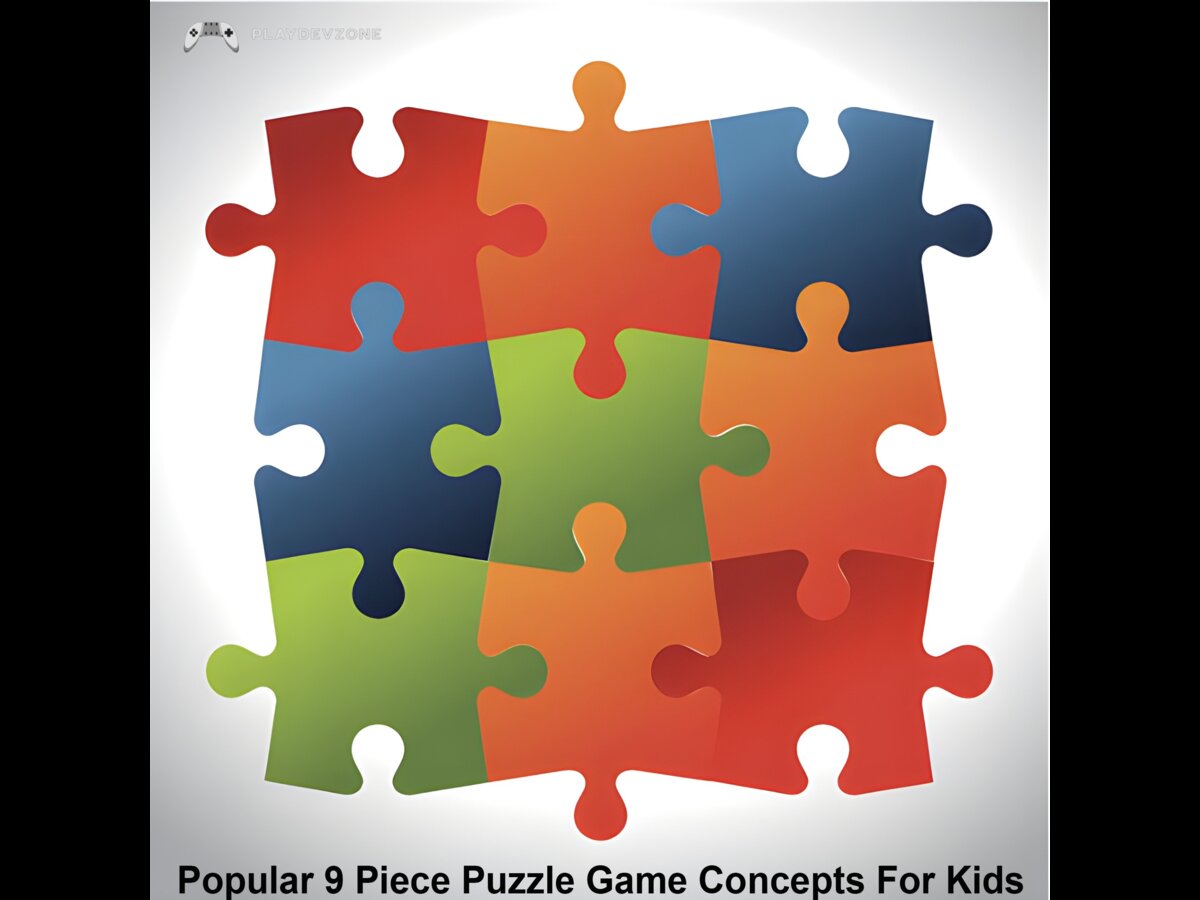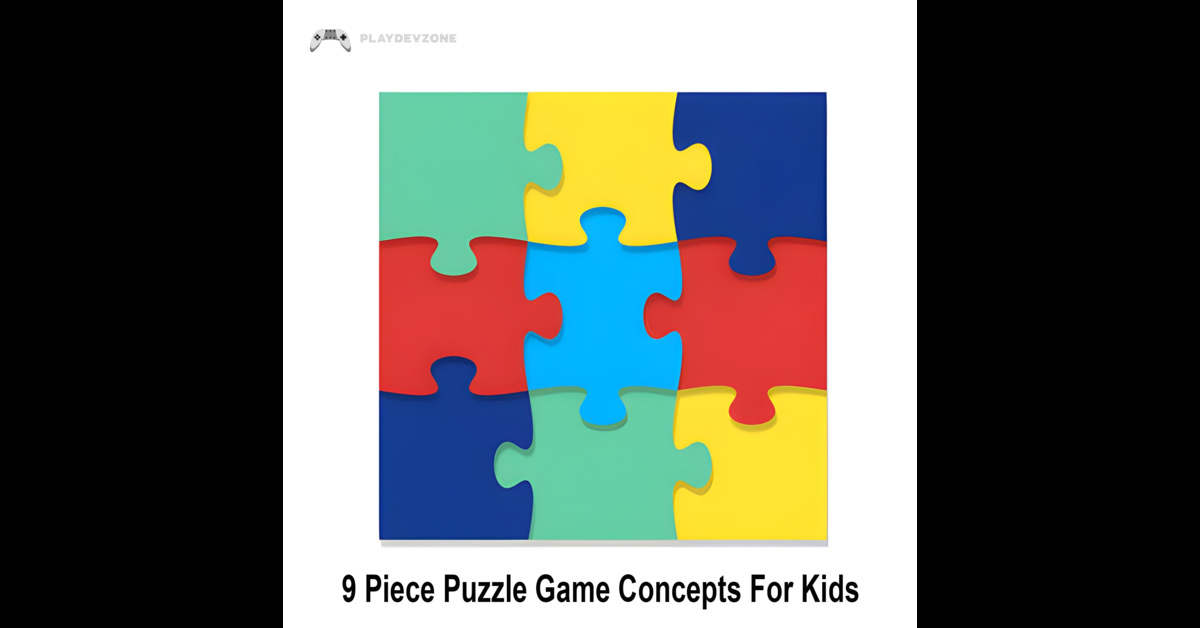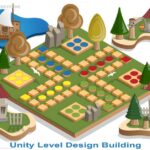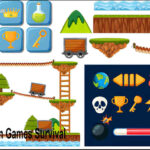Are you looking for a fun and educational way to boost your child’s problem-solving skills?
Look no further! In this blog, we’ll explore 12 popular 9-piece puzzle game concepts for kids that are not only exciting but also help build memory, concentration, and logical thinking (9 Piece Puzzle Game).

Whether you’re a parent, teacher, or caregiver, these creative puzzle ideas are perfect for keeping young minds active and entertained.
From colourful animal puzzles to imaginative space adventures, each concept is designed to spark curiosity and make learning playfully engaging.
Why 9-Piece Puzzles Are Perfect for Kids
9-piece puzzles game are the perfect starting point for young learners to explore the joy of problem-solving.
These beginner-friendly puzzles challenge kids just enough to boost their confidence while improving focus, memory, and hand-eye coordination.
Designed with colourful and engaging themes, they make learning fun and stress-free.
Whether it’s matching animals, numbers, or shapes, 9-piece puzzles game help develop logical thinking and fine motor skills playfully.
Ideal for toddlers and preschoolers, they transform learning into an exciting adventure. Discover why 9-piece puzzles are a must-have activity for your child’s early growth and creativity!
12 Popular 9-Piece Puzzle Concepts for Kids
1. Animals of the World
Let children assemble a 9-piece puzzle featuring animals (e.g., a lion, an elephant, and a giraffe).
Skills: animal recognition, vocabulary, and matching.
Tip: Use a frame or board to make it easier for younger kids.
2. Fruits & Vegetables
A puzzle showing colourful fruits/veggies (banana, carrot, apple, etc.).
Skills: food vocabulary, healthy eating concepts, colour recognition.
Tip: After finishing, ask “Which one is your favourite fruit?” to expand the conversation (9 Piece Puzzle Game).
3. Vehicles & Transport
Vehicles like a car, train, aeroplane are in a 9-piece puzzle.
Skills: transport vocabulary, sequencing (e.g., plane → car → bike).
Tip: Use sound effects (“vroom!”, “choo-choo!”) as they place pieces to boost fun.
4. Underwater / Sea Life
Sea creatures: fish, octopus, dolphin, etc.
Skills: animal habitats, ocean learning, and fine motor skills.
Tip: After the puzzle, ask “Which animal lives in coral reefs?” to extend learning.
5. Alphabet / Letters (9 Key Letters)
Select nine letters (e.g., A through I) in puzzle form.
Skills: letter recognition, early literacy.
Tip: When each piece is placed, say the letter aloud to reinforce sound and shape.
6. Numbers & Counting (1-9)
Pieces labelled 1 to 9 (or show sets of objects for 1 through 9).
Skills: counting, number recognition, and early math.
Tip: After the puzzle is done, ask “Which number is 5?” or “Put your finger on number 7”.
7. Shapes & Colours
9 pieces each shape coloured differently (triangle, square, circle, etc.).
Skills: shape recognition, colour naming, visual discrimination.
Tip: Mix pieces and ask, “Find the red shape”, or “Which piece is a triangle?”.
8. Seasons or Weather
Pieces showing sun, rain, snowflake, autumn leaf, etc. (9 weather-/season-icons).
Skills: understanding seasons, weather vocabulary (9 Piece Puzzle Game).
Tip: Post-puzzle talk: “Which piece shows snow? What do you wear then?”
9. Farm Life & Animals
Farm animals + tractor + barn scene in 9-piece format.
Skills: vocabulary about farm, environment, animals & roles.
Tip: Use sounds: “Moo”, “Cluck”, then ask “Which animal says neigh?”.
10. Space / Planets
Planets, rockets, astronauts, stars.
Skills: interest in space, shape recognition, and significant world concepts.
Tip: After finishing, ask “How many planets do you see?” to encourage counting (9 Piece Puzzle Game).
11. Dinosaurs
9 pieces each showing a dinosaur or part of a prehistoric scene.
Skills: dinosaur names, scientific curiosity, themed play.
Tip: Add a fun fact: “This is a T. rex. What do you think it ate?”
12. Emotion / Feeling Faces
Pieces show different faces with emotions (happy, sad, surprised, etc.).
Skills: emotional literacy, vocabulary of feelings, social-emotional learning.
Tip: After solving, ask “Which piece shows ‘surprised’?” or “When do you feel happy?”
How to Choose the Right 9-Piece Puzzle for Your Child
Choosing the correct 9-piece puzzle for your child is all about matching fun with learning. Start by considering your child’s age, interests, and skill level.
Bright colours, large pieces, and familiar themes like animals or vehicles make puzzles more engaging for beginners (9 Piece Puzzle Game).
Always opt for safe, non-toxic materials and sturdy pieces that are easy for small hands to handle.
Educational puzzles with numbers, shapes, or letters can enhance early learning while keeping playtime exciting.
The correct 9-piece puzzle doesn’t just entertain, it builds confidence, patience, and problem-solving skills.
Pick wisely and watch your child’s creativity and curiosity come to life!
Creative Ways to Use Puzzles in Daily Learning
Puzzles aren’t just fun they’re powerful tools for daily learning! Incorporating puzzles into your child’s routine can boost critical thinking, memory, and problem-solving skills while keeping playtime exciting (9 Piece Puzzle Game).
Try turning puzzle pieces into storytelling prompts, where each piece sparks a new part of the story, or use them to teach colors, shapes, and numbers through hands-on activities (9 Piece Puzzle Game).
Puzzles also work well for teamwork, letting siblings or friends collaborate and learn together.
Even short daily sessions can strengthen focus and patience.
By weaving puzzles into everyday activities, you transform learning into an interactive adventure that inspires curiosity, creativity, and a lifelong love for exploration (9 Piece Puzzle Game).
FAQ (Frequently Asked Questions)
What age is a 12 piece puzzle for?
Are you wondering what age is a 12-piece puzzle suitable for?
Choosing the right puzzle for your child can make all the difference in developing their problem-solving skills and confidence (9 Piece Puzzle Game).
With pieces that are manageable yet challenging, 12-piece puzzles strike the perfect balance for young learners.
But what age group can truly benefit from this type of puzzle, and how do you know if your child is ready to tackle it?
What is the 15 puzzle game?
Have you ever heard of the 15 puzzle game and wondered what makes it so intriguing?
This classic sliding puzzle has fascinated kids and adults alike for decades.
But what exactly is the 15 puzzle game, how is it played, and why is it considered a fun yet challenging brain exercise?
If you’re curious about a game that combines logic, strategy, and problem-solving in a simple yet addictive way, understanding the 15 puzzle could be your first step toward hours of entertaining learning (9 Piece Puzzle Game).
What is the best game for 12 year old kids?
Are you searching for the best game for 12-year-old kids that’s both fun and educational?
At this age, children need games that challenge their creativity, problem-solving, and critical thinking while keeping them entertained.
But with so many options available, how do you choose a game that’s age-appropriate, engaging, and even helps develop essential skills?
Whether you’re a parent, teacher, or caregiver, finding the perfect game can make playtime meaningful and exciting (9 Piece Puzzle Game).
Curious about which games hit the sweet spot for 12-year-olds?
How to teach a child puzzle?
Are you wondering how to teach a child puzzles in a way that’s fun, educational, and stress-free?
Introducing puzzles to kids can be a fantastic way to boost their problem-solving, concentration, and fine motor skills, but it can also be tricky if you’re not sure where to start (9 Piece Puzzle Game).
What’s the best approach to make puzzles engaging without causing frustration?
How do you guide them step by step while encouraging independence and confidence?
If you want your child to enjoy learning through puzzles and develop essential cognitive skills, understanding the proper teaching techniques is key.
What is the 15 puzzle problem?
Have you ever come across the 15 puzzle problem and wondered why it’s considered both challenging and fascinating?
This classic brain teaser isn’t just a simple sliding puzzle; it’s a problem that has intrigued mathematicians, students, and puzzle lovers for generations (9 Piece Puzzle Game).
But what exactly is the 15 puzzle problem, and why does it test logic, strategy, and problem-solving skills in such a unique way?
If you’re curious about a game that blends fun with critical thinking, understanding the 15 puzzle problem could open the door to hours of engaging mental exercise.
Conclusion
Puzzles are more than just a fun activity; they’re powerful tools that spark creativity, enhance problem-solving skills, and boost confidence in young minds.
The 12 popular 9-piece puzzle concepts we’ve explored for kids offer endless opportunities for learning, imagination, and hands-on play (9 Piece Puzzle Game).
From animals and numbers to space adventures and personalised family puzzles, each concept is designed to make learning playful and engaging.
Introducing these puzzles into your child’s daily routine can turn screen-free time into a meaningful, educational experience (9 Piece Puzzle Game).
Start exploring these puzzles today and watch your child’s curiosity, focus, and creativity flourish!











